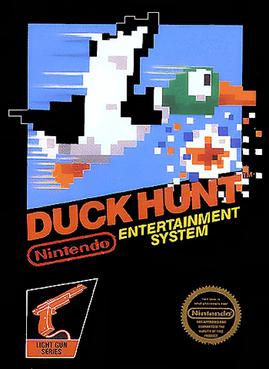
Duck Hunt is a 1984 light gun shooter video game developed and published by Nintendo for the Nintendo Entertainment System (NES) video game console and the Nintendo Vs. System arcade hardware. The game was first released in April 1984, in Japan for the Family Computer (Famicom) console and in North America as an arcade game. It was then released as a launch game for the NES in North America in October 1985, with it also releasing in Europe two years later.

The 3DO Interactive Multiplayer, also referred to as simply 3DO, is a home video game console developed by The 3DO Company. Conceived by entrepreneur and Electronic Arts founder Trip Hawkins, the 3DO was not a console manufactured by the company itself, but a set of specifications, originally designed by Dave Needle and Robert J. Mical of New Technologies Group, that could be licensed by third parties. Panasonic produced the first models in 1993, and further renditions of the hardware were released afterwards by GoldStar, Sanyo, Creative Labs, and Samsung Electronics.
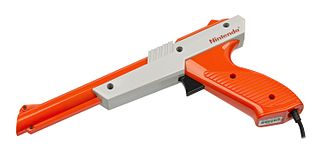
A light gun is a pointing device for computers and a control device for arcade and video games, typically shaped to resemble a pistol.
Full-motion video (FMV) is a video game narration technique that relies upon pre-recorded video files to display action in the game. While many games feature FMVs as a way to present information during cutscenes, games that are primarily presented through FMVs are referred to as full-motion video games or interactive movies.

Contra is a run and gun video game developed and published by Konami, originally developed as a coin-operated arcade video game in 1986 and released on February 20, 1987. A home version was released for the Nintendo Entertainment System in 1988, along with ports for various home computer formats, including the MSX2. The arcade and computer versions were localized as Gryzor in Europe, and the NES version as Probotector in PAL regions.

Wild Gunman is a light gun shooter game developed and published by Nintendo. Originally created as an electro-mechanical arcade game in 1974 by Gunpei Yokoi, it was adapted to a video game format for the Famicom console in 1984. It was released in 1985 as a launch game for the Nintendo Entertainment System (NES) with the Zapper light gun.

American Laser Games was a company based in Albuquerque, New Mexico that created numerous light gun laserdisc video games featuring live action full motion video. The company was founded in the late 1980s by Robert Grebe, who had originally created a system to train police officers under the company name ICAT and later adapted the technology for arcade games. Its first hit game was Mad Dog McCree, a light gun shooter set in the American Old West. By mid-1995 they were recognized as the leading company in the medium of laserdisc-based arcade games. Almost all arcade games released by the company were light gun shooters and a number of them also had an Old West theme.

The Menacer is a light gun peripheral released by Sega in 1992 for its Sega Genesis and Sega CD video game consoles. It was created in response to Nintendo's Super Scope and as Sega's successor to the Master System Light Phaser. The gun is built from three detachable parts, and communicates with the television via an infrared sensor. The Menacer was announced at the May 1992 Consumer Electronics Show in Chicago and was released later that year. The gun was bundled with a pack-in six-game cartridge of mostly shooting gallery games. Sega also released a Menacer bundle with Terminator 2: The Arcade Game.

Time Crisis is a first-person on-rails light gun shooter series of arcade video games by Namco, introduced in 1995. It is focused on the exploits of a fictional international intelligence agency who assigns its best agents to deal with a major threat by a hostile organisation, which has ranged from criminals, terrorists and hostile military outfits, and mostly take place within fictional locations across the world. The arcade series differed from other light gun shooters of its time by incorporating unique mechanics, including the ability to duck into cover to dodge attacks and reload the player's weapon, and forcing players to complete battles in each level within an allotted amount of time.
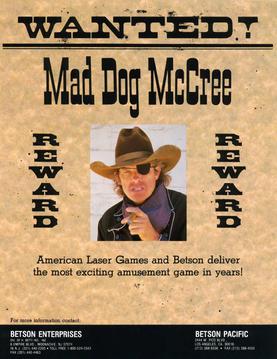
Mad Dog McCree is the first live-action laserdisc video game released by American Laser Games. It originally appeared as an arcade game in 1990.

Crime Patrol is a live-action LaserDisc video game released by American Laser Games in 1993. American Laser Games released a sequel, Crime Patrol 2: Drug Wars later that year.
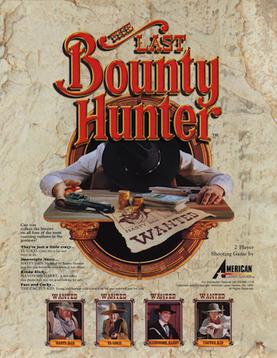
The Last Bounty Hunter is a live-action laserdisc video game released by American Laser Games in 1994. Like almost all of the games produced by the now-defunct company, it is a rail shooter and, like the two installments in the Mad Dog McCree series before it, is set in the Old West. However, it takes a more comedic approach than the Mad Dog McCree games in both its story sequences and the characters' comically exaggerated reactions to being shot. Filmed at Old Tucson Studios in Tucson, Arizona, it was one of the company's last releases before it was forced to close down. It was re-released by Digital Leisure in 2002 and was eventually packaged with Fast Draw Showdown by Global VR as an arcade cabinet under the name Six Gun Select.

Mad Dog II: The Lost Gold is a live-action laserdisc video game produced by American Laser Games, released for the arcade, Sega CD, 3DO, CD-i and DOS, the first release being in 1992; the quality of the video is the lowest on Sega CD. A sequel to the moderately popular Mad Dog McCree, the game abandoned the rather simple style of the original, introducing elements that can be considered "Hollywood", including dynamic shootout scenes and in-game music, as opposed to the original's almost complete lack thereof. Like the first game, the player follows the storyline and is required to quickly shoot certain enemies to proceed on the quest. The game was re-released by Digital Leisure in 2003 on DVD-Video and again in 2009 on the Wii as part of the Mad Dog McCree Gunslinger Pack, a compilation that also includes the first Mad Dog game as well as The Last Bounty Hunter.
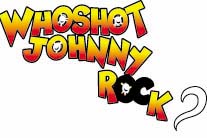
Who Shot Johnny Rock? is a live-action full-motion video laserdisc video game produced by American Laser Games and released for the arcades in 1991, and then for the DOS, Sega CD, 3DO and CD-i platforms around 1994. As part of a series of similar-styled games released by the company, Who Shot Johnny Rock? introduces a different setting than most of the others, while maintaining almost identical gameplay. The game was re-released by Digital Leisure around 2003 with updated video and sound, in addition to several bonus options.
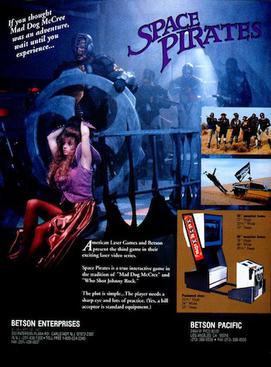
Space Pirates is a live-action LaserDisc video game, released by American Laser Games for the arcade in 1992 and ported to MS-DOS computers in 1994 and the 3DO Interactive Multiplayer in 1995. The game was re-released for several platforms by Digital Leisure around 2003, with updated sound and video, among other American Laser Games titles.
Digital Leisure, Inc. is a Canadian publisher of software. The company formed in 1997 with the aim to acquire, remaster and publish numerous classic video-based arcade games such as the Don Bluth-animated titles Dragon's Lair, Dragon's Lair II: Time Warp and Space Ace. Over time, they have acquired the publishing rights to various full motion video games, which they have re-released on a variety of modern formats. In more recent years, they have produced original games as well.

Crime Patrol 2: Drug Wars is a live-action laserdisc video game, released by American Laser Games in 1993. It was ported to the 3DO Interactive Multiplayer and CD-i. It is the sequel to the arcade game Crime Patrol, with very similar gameplay, objectives and scenery. The game was re-released by Digital Leisure in 2002.

Fast Draw Showdown is a live-action laserdisc video game, released by American Laser Games in 1994 for a limited number of platforms. As one of the last live-action rail shooters released by the company, which began the series with Mad Dog McCree, it is also arguably the shortest. The game was filmed entirely in at the Old Tucson Studios near Tucson, Arizona, with sets used for several notable films belonging to the Western genre.
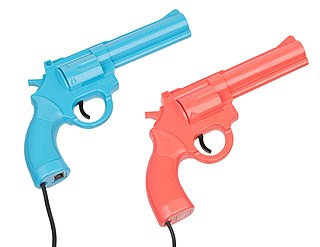
The Justifier is a light gun peripheral released by Konami for numerous home console games. Konami released versions of the gun for the Mega Drive/Genesis, Super NES, and PlayStation consoles. The original gun was similar in appearance to a Colt Python. The guns were originally designed for use with the home versions of Konami's Lethal Enforcers games, although they are compatible with other titles as well.
















